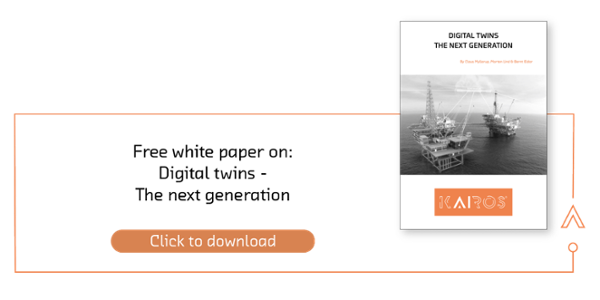Imagine a control room without alarms... Can you see it?
For decades, alarms have been the way we signal and inform the operator that something is about to happen. A sign to look closer at something or a warning. The problem has been that we have an increased need for automation or digitalization, and we are currently struggling to provide a better way for the operator to get data, other than by presenting an alarm. The development over the past decades from analogue alarm lamps, digitalizing those signals and putting them into a computer, has made the situation even harder for the operator. The challenge is that the modern digitalized systems have the same approach to alert and inform the operators with tools for help that are comparable to the analogue solution, but the number of alarms has increased exponentially. Every problem faced in the operation of a plant is fixed with another alarm implemented, meaning the situation for the operator is only getting worse. The more automation, the harder it is for the operators to understand the situation, react in time, and intervene in the correct way when needed.
Accidents happen
The increasing level of automation or digitalization, which includes a myriad of integrated systems and smart control functions is also an issue. After there has been an incident at a plant, human error is always the subject being discussed, but for today’s complex plants, there are no proper tools available to avoid human error. It is obvious that situational awareness is of vital importance in order to be able to respond correctly and promptly in problem-solving situations with time pressure. Understanding the real-time risks is very important to be able to evaluate and come up with the correct action plan to return to normal operation. The current process automation systems are lacking tools to provide comprehensive situational awareness to the operator, so that they are capable of making the correct decisions in a timely manner and intervene before anything happens.
This was visibly the case in the “Helge Ingstad” accident a couple of years ago. In that incident, there was not one single cause, rather a significant number of smaller issues that in the end led to the ships crashing and “Helge Instad” sinking. What has been pointed out as possible causes were lack of experience, not using the available tools, poor communication, and a fixed perception of the situation. In other words, human error due to lack of situational awareness was the leading cause.
How are operators working today?
Control room operators are supposed to constantly monitor and be on the alert, identify if the plant is operating safely, and know when and how to intervene when the automation system is unable to control the plant safely, preferably before an alarm situation. However, in many cases the operators are forced into working reactively, going from one alarm to another, a clear sign that there is a lack of tools giving them the full picture. The operators are left with loads of sensor values, trends, and alarms that they have to put together to find out what the current situation is, what the root cause of the problem is, and what the consequence of this actual situation might be. The possible fault scenarios and the causes inherit in design are also poorly documented and not used in real-time to guide the operator, leaving the operators to constantly gather and digest data, and construct their own perception of the situation, before they can actually understand and plan how to mitigate the consequence and respond to the root causes identified. Add to the equation that all this cognitive thinking has to be done in seconds or minutes with only the operators own competence and experience to guide them.
This work situation is especially challenging for many reasons, with one of the main challenges being that classic alarm systems are based on the assumption that:
one alarm = one cause = one consequence = one action
This is an oversimplification, as we know. One alarm can have many different reasons and end up with a number of outcomes, requiring different mitigations. As a result, the alarm system will only support the operators in the detection phase that triggers the need for evaluation and intervention. In most cases, the operators are left with a difficult cognitive task, where they have to rely on their experience and knowledge to put the puzzle together so that they can respond correctly. The level of responsibilities and pressure can be tremendous as safety of people and expensive equipment is at stake. This is one of the reasons why there is a need for better tools that can provide instant enhanced situational awareness and help operators offload parts of the constant cognitive demands they face daily.
Operators need new tools
There is clearly room for improvement, and the operators deserve to have new tools that can actively help them run the plant in a more efficient and safe way, to avoid production losses and possibly unsafe situations. The time has come to give the operator something better, as technology has developed with new available solutions. To avoid that today’s systems complexity increases the level of human mistakes, the vicious circle has to end.
We should create a system that can harvest the knowledge and experience from the high performing operators and put it to use for all operators in real time. The operators need to get back in control and the best way forward is that we provide them with a better picture of the total situation, including how causes and symptoms are presented, while considering how different systems interact and influence each other. We also need a tool that can predict future consequences and shows with dynamic suggestions of how to respond to an alarm.








